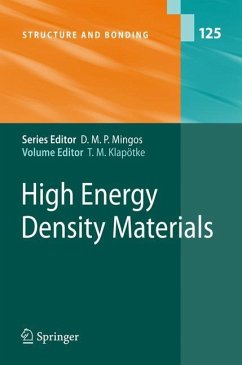This book summarizes some recent developments in the area of high-energy high-density (HEDM) materials. Rather than being comprehensive in scope, emphasis is given to structural and bonding features of highly energetic - terials with possible applications as high explosives (secondary explosives) or propellants. In this book we do not focus on primary explosives (e.g. lead azidereplacements)sincebyde?nitiontheexplosiveperformance(detonation velocity and detonation pressure) of such materials although very sensitive are much less energetic than secondary (high) explosives. Modern HEDMs derive most of their energy (i) from oxidation of the c- bon backbone, as in traditional energetic materials, (ii) from ring or cage strain, or (iii) from their very high positive heat of formation. Examples of the?rstclassare traditionalexplosives, suchasTNT,RDXand HMX.Modern nitro-compounds, such as CL-20 or the recently reported hepta- and octa- trocubanes, belong to the second group of explosives and possess very high densities and enhance the energies utilizing substantial cage strain. Members of the third class of compounds are high-nitrogen compounds (up to 85% - trogencontent), such as aminotetrazole and nitrotetrazolederivatives, which show the desired remarkable insensitivity to electrostatic discharge, friction and impact, while having very high positive heats of formation and therefore very high explosive powers. The synthesis of energetic, non-nuclear materials for military application has been a long-term goal in various academic and military research groups worldwide. Some of the current challenges that face HEDMscientists are: Demandforenvironmentallycompatibleandtoxicologicallyacceptable- plosives and propellants. Examples are replacements for TNT, RDX and HMXsince nitro-explosivesper se,aswellastheir environmental transf- mation products, are toxic.








